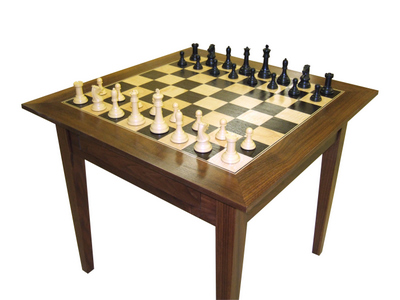
|
Walnut chessboard table with curley maple and wenge
squares. An accent border of maple and wenge separates the field
from the walnut edging.
|
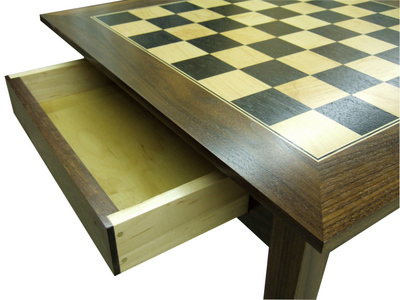
|
The table features a small drawer that can open from either
end. Drawer construction is a simple rabbit joint reinforced with
brass dowels.
|
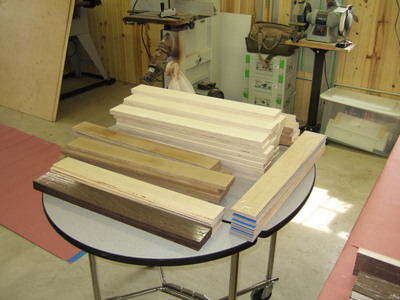
|
Strips of 3/4 inch baltic birch plywood form the core of the
chessboard. 1/8 in laminates of wenge and maple are cut to the
same width as the plywood laminates. 1/8 inch oak strips are used
as a balancing veneer on the bottom of each strip.
|

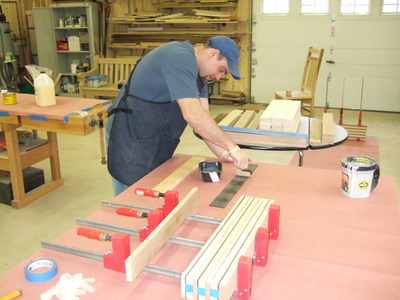
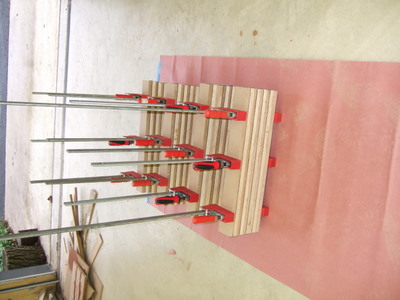
|
A sandwich of face veneer (wenge in this case,) the baltic
birch plywood core and the backing veneer is prepared. Each
chessboard has a total of eight strips, four dark and four light.
Cauls and clamps are used ensure even clamping pressure while the glue
sets up.
|

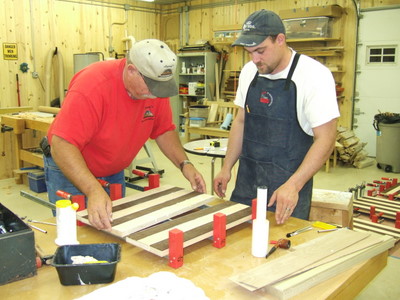
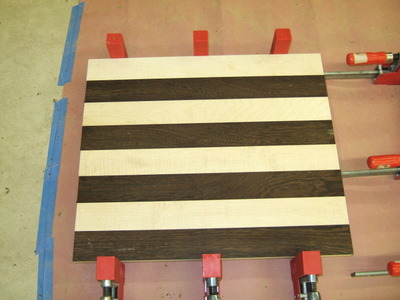
|
Dark and light strips are edge glued as the first step to form the field.
|

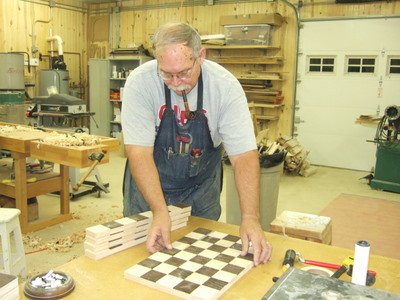
|
Strips with alternating dark and white squares are created by
ripping on the table saw. By flipping each strip the resulting
chessboard begins to emerge.
|
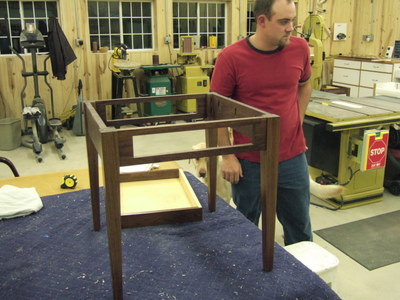
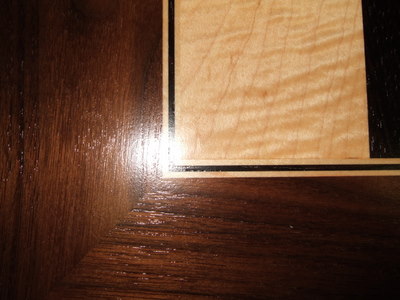
|
The walnut table legs are tapered on the inside.
Extreme precision is required for the miter joints.
|
